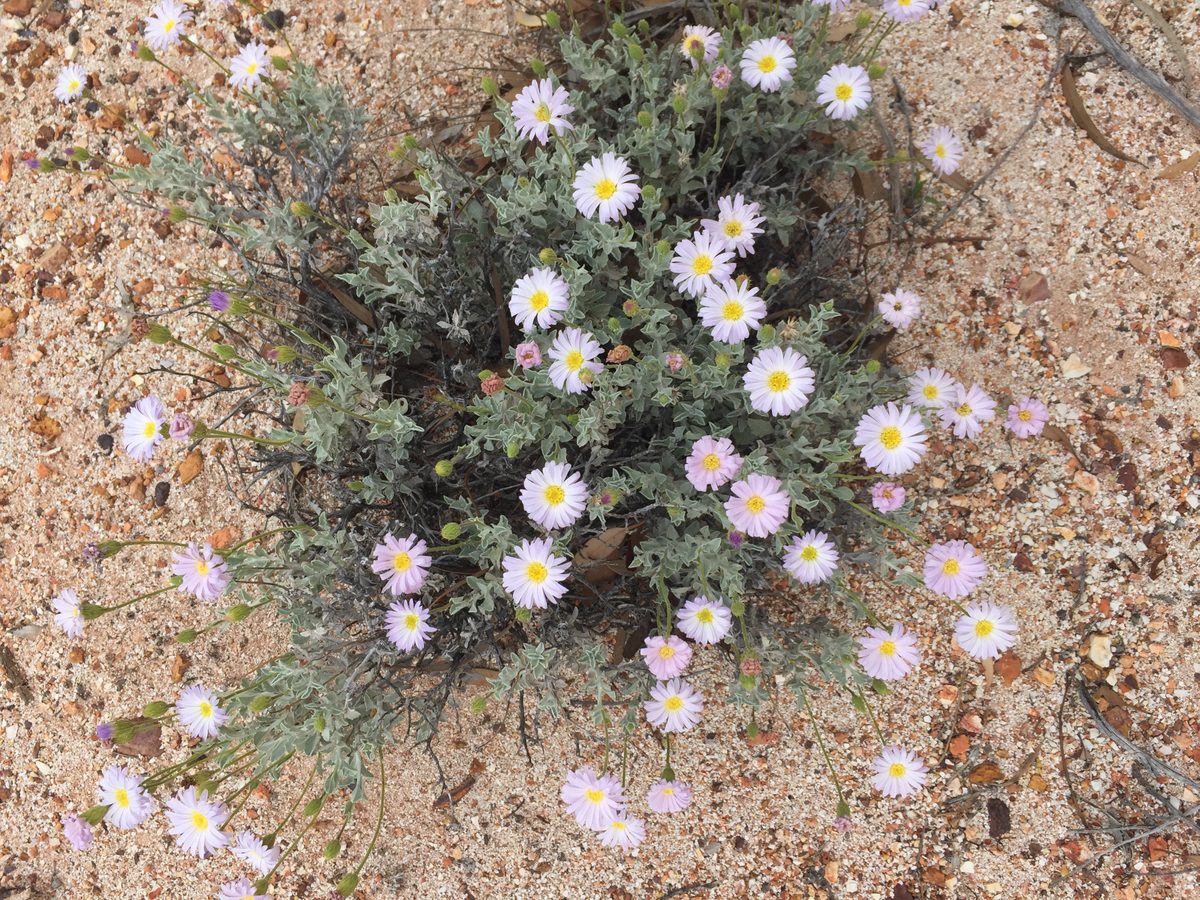New project to protect rare Outback daisy
The SA Arid Lands Landscape Board has received $183,326 in grant funding from the Australian Government’s Environment Restoration Fund to protect the endangered Arckaringa daisy (Olearia arckaringensis).

The SA Arid Lands Landscape Board has received $183,326 in grant funding from the Australian Government’s Environment Restoration Fund to protect the endangered Arckaringa daisy (Olearia arckaringensis).
A pale purple or occasionally white-flowering daisy, the species is known to exist only in a very small area – less than three-square kilometres – north of Coober Pedy.
The project, Implementing Short and Long-term Safeguards for Arckaringa Daisy in SA, will see the board working in partnership with Antakarintja traditional owners, pastoralists, and non-Government organisations to protect the daisy across the extent of its known range.
The use of exclusion cages to guard part of the population from livestock and large herbivore threats will be constructed as part of the project along with a seed propagation trial with seed added to the national seed bank. A survey of the region to establish current distribution, population size, genetic diversity and habitat preferences will also occur.
SA Arid Lands Landscape Board chair Ross Sawers said the opportunity to safeguard a unique species like the Arckaringa daisy is of great importance.
“For a species known to exist in such a small area, it is important to do what we can to ensure the population is given every chance of long-term survival.”
The Arckaringa daisy was discovered by chance in 2000. It was found in the gullies of the Breakaways in an isolated pocket of Arckaringa Station, north of Coober Pedy by scientists Rob Brandle and Peter Lang.
The discovery led to several visits by scientists over following years to learn more about the daisy, which has since had only minor expansion to the known single population in adjacent gullies.
A further two populations were discovered in 2011, along the same breakaway cliff-line on the neighbouring property, Evelyn Downs, which raised the possibility that the species may be more widespread.
A detailed survey was undertaken in 2017 through areas believed to be suitable habitat along the Breakaways escarpment. It increased the known populations from three to six and the known number of plants from less than 300 to 2138.


